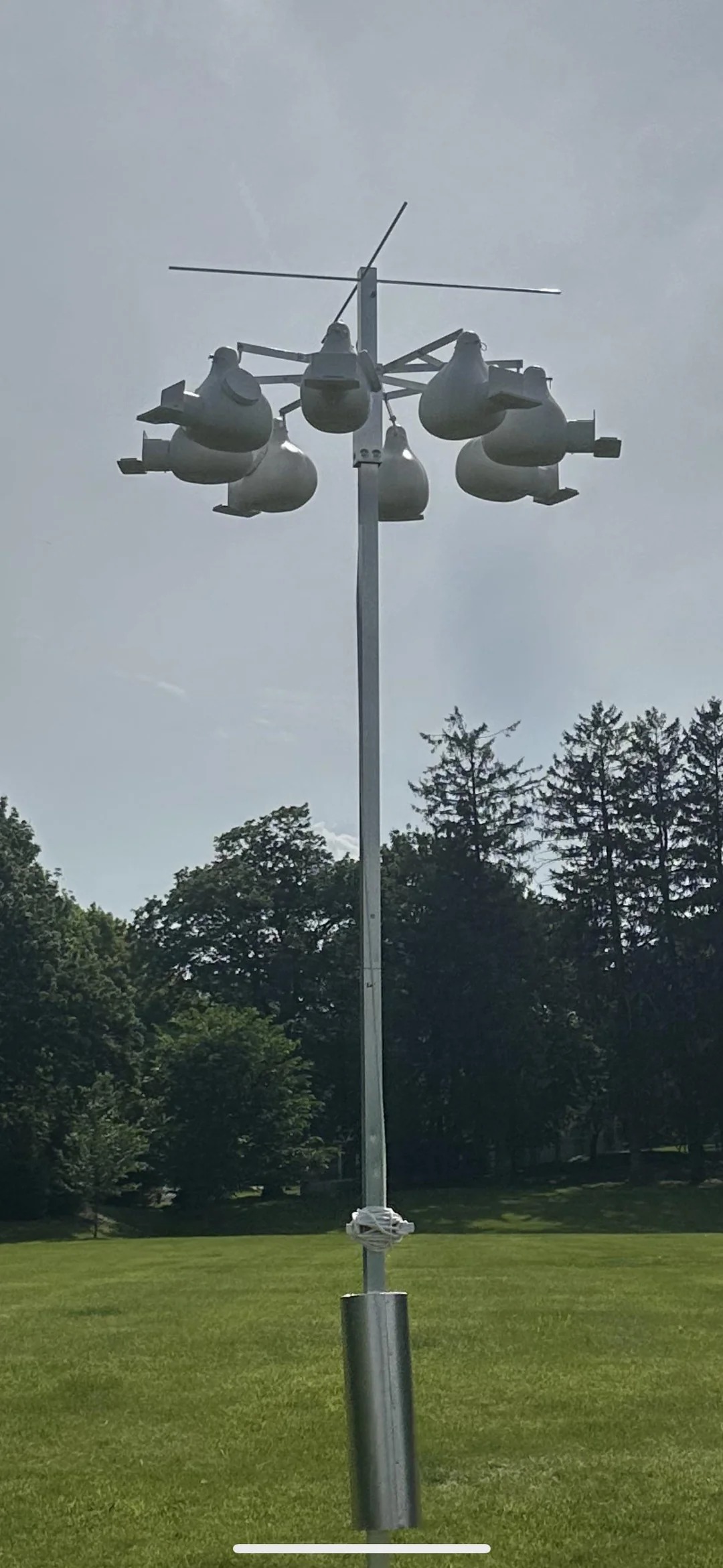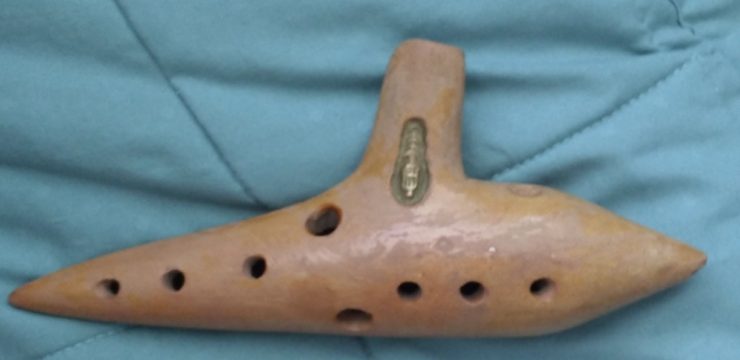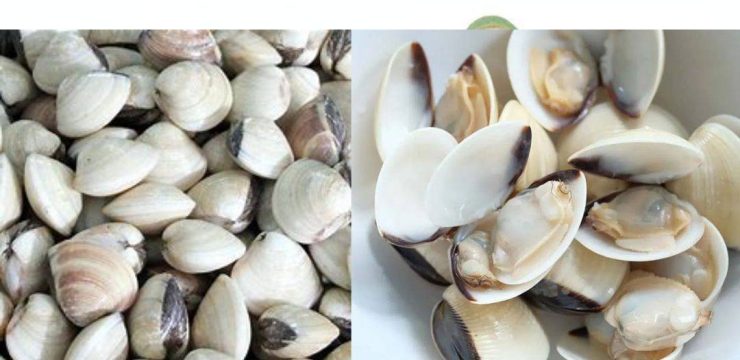If you’ve ever taken a stroll through your local park and noticed a tall metal pole with several white, pod-like objects hanging from it, you might have assumed they were surveillance cameras or perhaps high-tech weather instruments. You’re not alone—many people find these structures a bit puzzling at first glance.

Towering over 12 feet tall and standing prominently in open spaces, these installations definitely grab attention. But the truth behind them is far more charming and environmentally friendly than you might expect. Those strange white pods aren’t cameras or weather sensors—they’re actually purple martin gourd houses, built to support one of North America’s most admired migratory birds: the purple martin. These birds are the largest species of swallows on the continent and are famous for their beautiful glossy dark-blue feathers that shimmer like black from afar. More than just pretty, they’re aerial experts, swooping and darting through the air to catch insects in flight. Watching them perform their aerial maneuvers is like witnessing a natural air show.
However, despite their grace and popularity, purple martins face challenges when it comes to finding safe nesting spots. In the eastern United States especially, the decline in natural nesting cavities—like hollowed trees—has left these birds highly dependent on man-made housing. This has led to a unique and long-standing relationship between humans and martins, with people often referred to as “landlords” building and maintaining dedicated birdhouses just for them. The distinctive bulbous white containers you see in parks today are modern takes on traditional gourd houses. Historically, Native Americans and early settlers would hollow out real gourds and hang them from tall poles to create inviting homes for the bird
While the ones you see today are usually made of lightweight, durable plastic, they still mimic that age-old design. These modern gourds are thoughtfully constructed to offer ample nesting space, effective drainage and ventilation for healthy chicks, and are mounted high enough to ward off ground-based predators. They’re usually grouped together around a single pole, reflecting the purple martins’ social nature. These birds prefer to nest in colonies and enjoy being close to others of their kind. That’s why you’ll often see several gourd houses clustered in a circular pattern—it encourages community living among the birds.
Public parks make an ideal setting for these gourd house installations. Purple martins favor wide-open spaces with few tall trees, which not only give them excellent visibility for spotting predators but also allow for the unobstructed flight paths they need. Installing these birdhouses in such locations serves multiple purposes. It directly supports conservation efforts by providing safe nesting areas, helps control insect populations naturally since purple martins are known for consuming large quantities of flying bugs, and also gives park visitors a chance to observe and learn about native wildlife. In fact, many municipalities and birding groups actively monitor these colonies, keeping track of nesting success rates and adjusting maintenance routines as needed to help the birds flourish. So if you’re looking closely at one of these poles in your local park, here’s what you’re probably seeing: multiple gourd-shaped nesting units arranged in a pattern that mimics natural colony structures, a telescoping pole or pulley system that allows caretakers to raise and lower the gourds for cleaning and monitoring, and perhaps a smooth metallic section near the bottom of the pole that acts as a guard to keep out climbing predators like snakes or raccoons. These thoughtful features are all designed with the birds’ safety and comfort in mind. The next time you’re out for a walk and you come across one of these tall poles with strange white pods hanging from it, you’ll know you’re actually looking at a well-crafted bird condo designed to give purple martins a fighting chance to thrive. It’s a quiet reminder that sometimes the most high-tech-looking things in a park are really just tools for protecting nature’s wonders.





